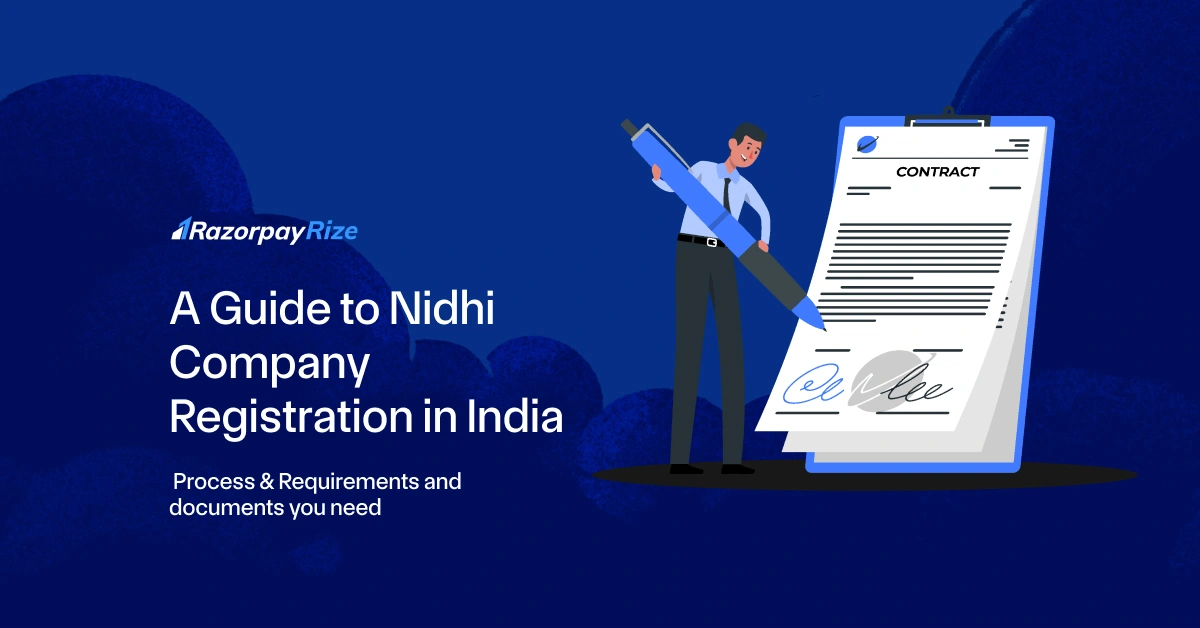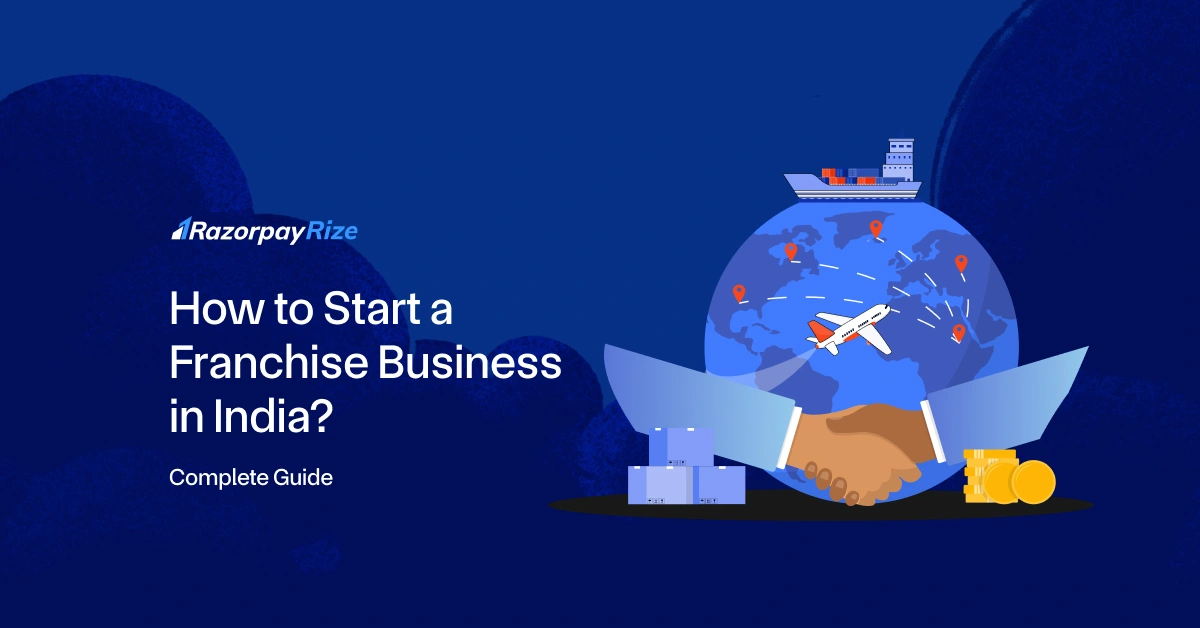A Limited Liability Partnership (LLP) combines the benefits of a partnership and a company, making it an attractive choice for entrepreneurs. It offers key advantages such as:
- Separate Legal Entity: An LLP has its own legal identity, distinct from its partners.
- Limited Liability: The liability of partners is limited to their agreed contribution.
- Tax Benefits: LLPs enjoy certain tax advantages compared to companies.
Despite these benefits, there may come a time when an LLP needs to be closed. This blog explains the step-by-step process of LLP closure.
Table of Contents
Closure of LLP - Overview
The Limited Liability Partnership (LLP) closure process is a significant decision that can arise from various circumstances. Whether driven by voluntary factors, such as a mutual decision by the partners to discontinue operations, or involuntary factors, like non-compliance with statutory requirements, understanding the reasons and methods of closure is crucial.
The decision to close an LLP often stems from the following reasons:
- Voluntary Closure:
Partners may mutually agree to cease operations due to business inactivity, an unprofitable venture, or a strategic shift in focus. This proactive decision is usually taken when all stakeholders conclude that continuing operations no longer align with their goals. - Involuntary Closure:
Sometimes, an LLP faces closure due to external circumstances such as non-compliance with legal or regulatory obligations, accumulation of penalties, or other statutory violations. In such cases, authorities may initiate the process of striking off the LLP from the official records.
Method or Procedure of Closing an LLP
Closing a Limited Liability Partnership (LLP) in India can be carried out through two primary methods: Voluntary Winding Up and Striking Off. Each method has its unique set of requirements, advantages, and limitations. Choosing the right approach depends on the LLP’s operational and financial status. Let’s look into the details of these two LLP closing procedures:
1. Voluntary Winding Up
Voluntary winding up is a process initiated by the partners when they collectively decide to dissolve the LLP. This method is typically chosen when the partners agree to cease operations due to inactivity, unprofitability, or a strategic decision to exit.
Advantages of Voluntary Winding Up:
- Controlled and Planned Process
- Avoids Penalties for Non-Compliance
Disadvantages of Voluntary Winding Up:
- Time-Consuming
- Settlement of Liabilities Required
2. Striking Off
Striking off is a simpler and faster method for closing an LLP. It is suitable for LLPs that have been inactive for a significant period and have no outstanding liabilities. This process involves applying to the RoC to remove the LLP’s name from the register.
Advantages of Striking Off:
- Simplified and Less Expensive
- Suitable for Dormant LLPs
Disadvantages of Striking Off:
- Not Applicable for LLPs with Liabilities
- Limited Scope for Active LLPs
Step-by-Step Procedure to Close an LLP
A brief overview of the process for closure of LLP in India:
1. Passing a Resolution for Winding Up
The first step is for the partners to pass a resolution for voluntary winding up. A majority of partners must agree, and the resolution must be filed with the ROC within 30 days.
2. Appointing a Liquidator
The partners must appoint a liquidator to oversee the winding-up process. The liquidator’s role includes realising the LLP’s assets and settling its liabilities.
3. Realising Assets and Paying Off Liabilities
The liquidator identifies and sells the LLP’s assets to clear all outstanding liabilities. Surplus funds, if any, are distributed among the partners.
4. Filing the Necessary Forms with the ROC
The LLP must file forms such as Form 24 and other requisite filings with the ROC to notify the authorities about the closure.
5. Obtaining the Final Order of Dissolution
After reviewing all filings and confirming the settlement of liabilities, the ROC issues a final order of dissolution, formally closing the LLP.
Filing LLP Form 24: Step-by-Step Process
Closing a Limited Liability Partnership (LLP) in India requires filing LLP Form 24 with the Ministry of Corporate Affairs (MCA). Below is a simplified step-by-step process to help you navigate this procedure:
1. Cease Business Operations
Before applying for closure, ensure that the LLP has either never commenced business or has stopped all commercial activities. If your LLP is still active, suspend all operations before proceeding.
2. Settle Liabilities and Close Bank Accounts
LLP Form 24 can only be filed if the LLP has no outstanding creditors and all bank accounts are closed. Obtain a closure letter from the bank as proof.
3. Draft Partner Affidavits
All designated partners must prepare an affidavit declaring:
- The LLP has ceased operations from a specific date or never started.
- The LLP has no liabilities, and partners agree to indemnify any future claims.
4. Prepare Supporting Documents
Attach the following documents to LLP Form 24:
- Copy of the latest Income Tax Return (if filed). If no returns were filed, this is not required for non-operational LLPs.
- A statement of accounts showing nil assets and liabilities, certified by a Chartered Accountant, dated no more than 30 days before filing.
5. Resolve Pending Filings
Ensure that:
- The LLP Agreement is filed, if not already done.
- Any overdue Form 8 and Form 11 are submitted up to the date of cessation of business.
6. File LLP Form 24 with MCA
Submit the completed LLP Form 24 with all attachments to the MCA. Once reviewed, a notice of striking off will be published on the MCA website if no objections are raised.
Documents Required to Close the LLP
Here is a list of LLP closure documents required during the process:
- Board Resolution for Winding Up: Document signed by all partners approving the winding-up process.
- Liquidator’s Consent: Written consent from the appointed liquidator.
- No-Objection Certificate from Creditors: If applicable, creditors must provide a no-objection certificate.
- Final Accounts and Balance Sheet: Statement of accounts showing all liabilities cleared.
- Tax Clearance Certificates: Certificate from the tax authorities confirming no pending dues.
Conditions for LLP Closure
Certain conditions must be met before initiating the LLP closure process:
- Settlement of Debts and Liabilities: All outstanding debts and liabilities must be cleared.
- Statutory Filings: All statutory filings and compliance requirements must be up-to-date.
- Approvals: Necessary approvals from all partners and creditors (if applicable) must be obtained.
Advantages and Disadvantages of LLP
Like any business entity, an LLP has its own advantages and disadvantages that should be carefully considered before choosing this structure.
Advantages of an LLP
- Limited Liability: The liability of partners is limited to their agreed contribution to the business, protecting personal assets in case of business debts or losses.
- Separate Legal Entity: An LLP is a separate legal entity from its partners, meaning it can own assets, enter into contracts, and sue or be sued independently.
- Flexibility in Management: There is no strict separation between ownership and management, allowing partners to manage the business as per their agreement.
- No Minimum Capital Requirement: Unlike private limited companies, LLPs do not have a minimum capital requirement, making them more accessible to small businesses and startups.
- Ease of Compliance: LLPs have fewer compliance requirements compared to companies, such as no mandatory board meetings or annual general meetings.
- Unlimited Number of Partners: An LLP can have any number of partners, offering greater flexibility in expanding ownership.
- Low Registration Cost: Setting up an LLP is more affordable than incorporating a private limited company.
Disadvantages of an LLP
- Limited Recognition: LLPs are not as widely recognised as private limited companies, which may affect investor confidence or business collaborations.
- Restrictions on Fundraising: LLPs cannot raise funds through equity, making them less suitable for businesses looking to attract venture capital or private equity investment.
- Limited Scope for Public Trust: LLPs are not listed on stock exchanges, so they may lack the transparency that comes with publicly traded companies, leading to lower public trust.
- Difficulty in Expansion: LLPs are not ideal for businesses aiming for rapid scalability, as the inability to issue shares limits their access to growth capital.
An LLP is an excellent choice for small businesses, professionals, and startups looking for a flexible, cost-effective business structure with limited liability. However, it may not be suitable for companies that require significant funding or aspire to scale rapidly.
Frequently Asked Questions
Private Limited Company
(Pvt. Ltd.)
- Service-based businesses
- Businesses looking to issue shares
- Businesses seeking investment through equity-based funding
Limited Liability Partnership
(LLP)
- Professional services
- Firms seeking any capital contribution from Partners
- Firms sharing resources with limited liability
One Person Company
(OPC)
- Freelancers, Small-scale businesses
- Businesses looking for minimal compliance
- Businesses looking for single-ownership
Private Limited Company
(Pvt. Ltd.)
- Service-based businesses
- Businesses looking to issue shares
- Businesses seeking investment through equity-based funding
One Person Company
(OPC)
- Freelancers, Small-scale businesses
- Businesses looking for minimal compliance
- Businesses looking for single-ownership
Private Limited Company
(Pvt. Ltd.)
- Service-based businesses
- Businesses looking to issue shares
- Businesses seeking investment through equity-based funding
Limited Liability Partnership
(LLP)
- Professional services
- Firms seeking any capital contribution from Partners
- Firms sharing resources with limited liability
Frequently Asked Questions
How do I close my LLP account?
To close your LLP account, follow these steps:
- Settle liabilities
- Pass a resolution
- File necessary documents
- Notify creditors & obtain consent (if any)
- Get Registrar’s approval
What is the process of leaving an LLP?
If an individual partner wants to leave an LLP, the process is as follows:
- Review the LLP Agreement
- Notify Other Partners
- Execute a Deed of Retirement
- File Form 3 and Form 4
- Update Bank and Other Records
Can an LLP be restored after its winding up?
Yes, an LLP can be restored after it has been struck off, but only under specific circumstances. The process is:
- Apply to the National Company Law Tribunal (NCLT) for restoration within three years of the LLP being struck off.
- Provide valid reasons for seeking restoration, such as business resumption or wrongful closure.
- Ensure all pending annual returns, financial statements, and fees are filed with the RoC.
- If the tribunal is satisfied, it will issue an order to restore the LLP. The RoC will then update its records accordingly.
What complications of non-compliance you may need to face during the LLP winding-up process?
Non-compliance can lead to several challenges when winding up an LLP:
- Heavy penalties
- Legal issues
- Delay in the winding-up process
- Blacklisting & disqualification
How long does an LLP winding-up process take?
The duration of the winding-up process depends on the method and circumstances:
- Voluntary Winding Up typically takes 4 to 6 months, depending on the completion of filings, approvals, and liability settlements.
Striking Off can be completed within 3 to 4 months if the LLP has no liabilities or pending compliance issues.
















